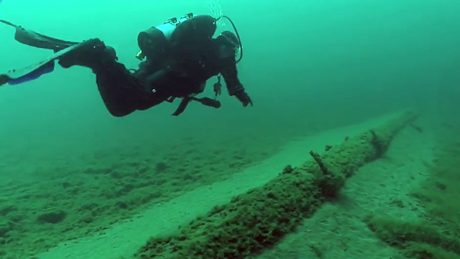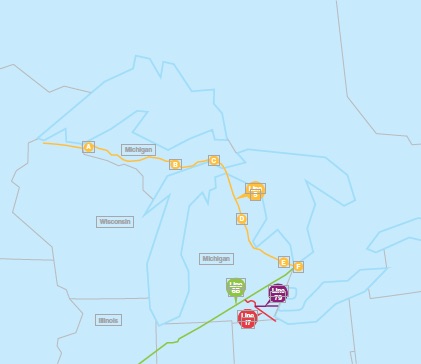State Board Recommends Universities Start Study on Risks of Line 5 Pipeline
It was the board’s first meeting since it was revealed Enbridge’s Line 5 pipeline has lost some of its coating.

The Line 5 pipeline carries petroleum products 645 miles from Wisconsin to Ontario in two pipes that sit in the water along the lake bed.

The state pipeline safety board met for the first time Monday since it was revealed that Enbridge’s Line 5 pipeline had lost some of its coating.
The controversial pipeline sends oil and liquid natural gas under the Straits of Mackinac. The board was updated on the coating issue. But it’s waiting on a plan and repair schedule from Enbridge before deciding what to do next.
The board did recommend state universities start a new study on the risks of the pipeline.
“I’m convinced that Michigan universities can put together a team to answer the questions but it’s going to be a very large task,” said Dr. Guy Meadows from Michigan Tech. A member of the pipeline safety board, Meadows will likely step down to head the study.
Meadows has previously worked for Enbridge, but board members say they’re confident Meadows, and the universities, will perform an independent study.
A prior risk analysis was scrapped after a conflict of interest emerged.
Environmental groups say the time for studies is over. Sean McBrearty is with Oil and Water Don’t Mix.
“We know that Line Five is much more dangerous even than previously anticipated,” he said. “So the time for them to recommend that the state shut down Line Five is now.”
The board also started a plan to make it easier for people to see where Michigan’s pipelines are located. The board will send a letter to U.S. Transportation Secretary Elaine Chao. It asks for permission to create a statewide map. That map would then be available online.
Right now, pipeline maps are only available on a county by county basis.
Valerie Brader is the director of the Michigan Agency for Energy and co-chair of the pipeline safety board.
“The mapping is to allow the public the opportunity to look and very easily find out what streams does this cross, what public lands does this cross, how close is this to my house, that sort of thing,” she said.
The federal government will have 90 days to respond to the request.
